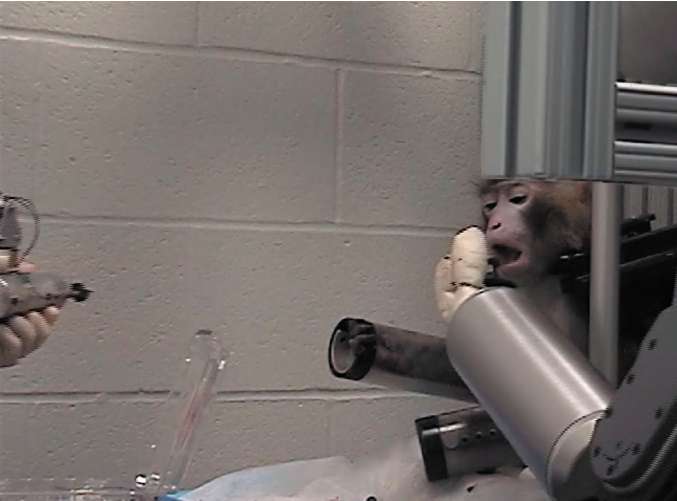BMI: the research that holds the key to hope for millions

When monkeys in Carolina remotely operated a robotic arm 600 miles away at the leading Institute of Technology in Massachusetts in 2000, using only their brain signals, the internet experiment was hailed as "a historic moment; the start of something totally new". Eight years on, scientists have announced another huge step towards developing a "brain-machine interface", or BMI: research aimed ultimately at allowing paralysed patients to control the movement of prosthetic limbs.
BMI is today the focus of worldwide research using both non invasive BMIs – neurons and electrodes placed on the scalp of an animal or human – and invasive BMIs, measuring activity from single neurons with miniature wires placed inside the brain.
In healthy subjects, the brain's primary motor area sends movement commands to the muscles through the spinal cord; the pathway that is interrupted in many paralysed people. The BMI research – and the monkey experiments – are seeking ways in which computers can decode brain activity into commands for the muscles.
Such studies using animals began in the 1970s, when it was established that monkeys' brains could learn to respond to training based on punishment and reward. By the 1980s, researchers had found a mathematical relationship between the electrical responses of certain neurons in monkeys and the directions in which monkeys moved their arms. But it was not until the 1990s, when experiments using monkeys, cats and humans began, that BMI research took off. One team at Harvard decoded neuronal movements to reproduce a series of moving images seen by cats.
One of the earliest uses of BMI in humans came in 2002 when the commercial researcher William Dobelle, a physiologist from New York who specialises in designing artificial organs, conducted a series of experimental operations on paying patients. The first of these was Jens Naumann, a Canadian patient blinded by work accidents at the age of 20, whose new vision was such that straight after the four-hour operation, he was able to drive a convertible around the institute's car park.
Subscribe to Independent Premium to bookmark this article
Want to bookmark your favourite articles and stories to read or reference later? Start your Independent Premium subscription today.

Join our commenting forum
Join thought-provoking conversations, follow other Independent readers and see their replies